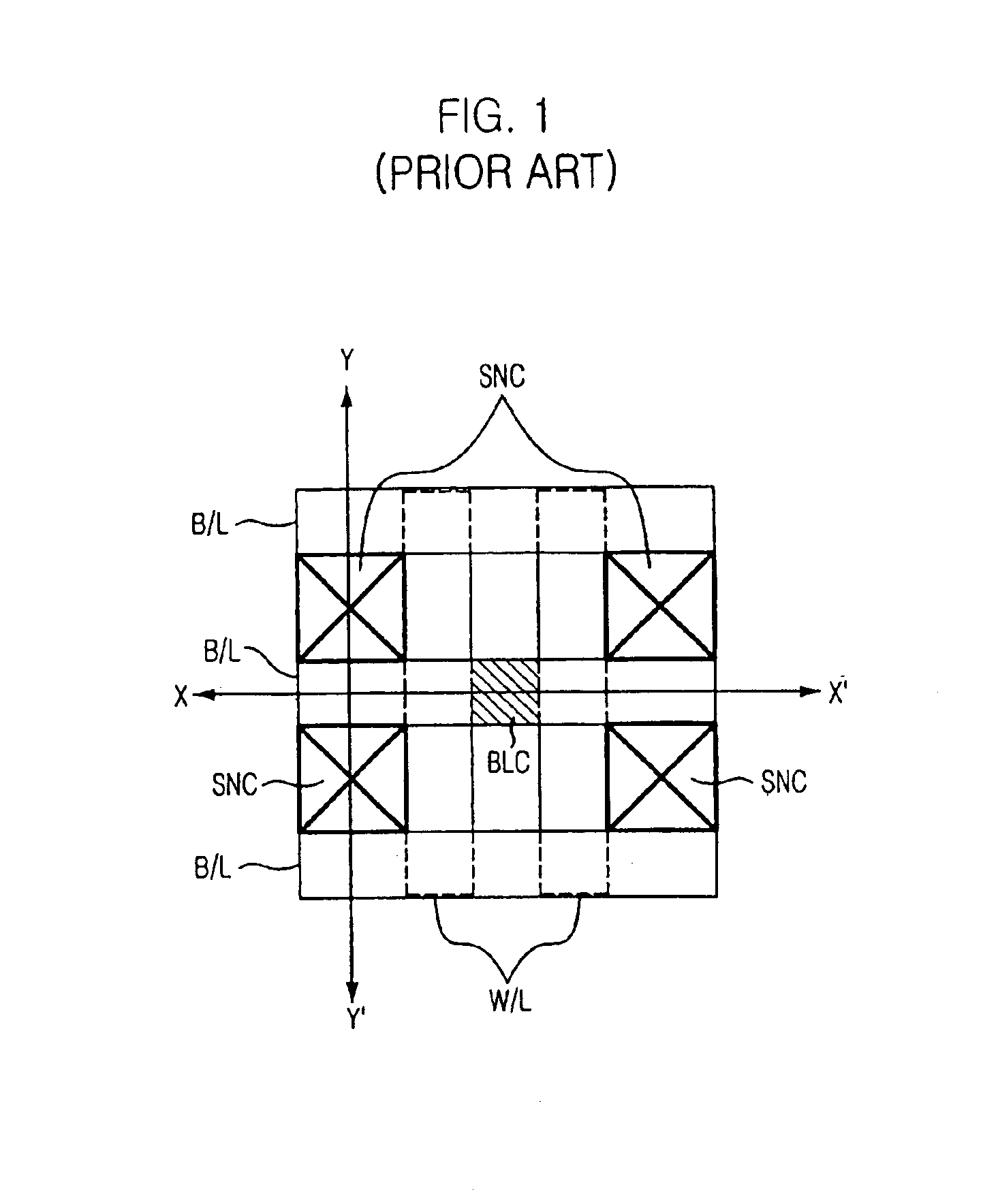Methods for fabricating semiconductor devices
a technology of semiconductor devices and manufacturing methods, applied in the direction of semiconductor devices, electrical appliances, transistors, etc., can solve the problems of reducing the yield of semiconductor devices, affecting the performance of semiconductor devices, and affecting the efficiency of semiconductor devices, so as to prevent an incidence of attack or erosion
- Summary
- Abstract
- Description
- Claims
- Application Information
AI Technical Summary
Benefits of technology
Problems solved by technology
Method used
Image
Examples
first embodiment
With reference to FIGS. 2A to 2B and FIGS. 4A to 4D, a method for fabricating a semiconductor device is disclosed in accordance with a FIGS. 2A to 2B are cross-sectional views taken along lines X-X′ and Y-Y′ shown of FIG. 1 after successive steps of the disclosed process.
Referring to FIG. 2A, a gate electrode 11 is formed on a substrate 10 containing various elements of the semiconductor device. In greater detail, the gate electrode 11 is formed with a single or stack layer of tungsten or polysilicon. A gate insulation layer (not shown) is formed at an interface between the gate electrode 11 and the substrate 10. On top of the gate electrode 11, a nitride- based hard mask (not shown) is formed from an oxide-based inter-layer insulation layer to protect the gate electrode 11 during a self align contact (SAC) process and to obtain an appropriate etch profile during the SAC process. The hard mask has a different etch selectivity than that gate electrode 11.
At this time, in 0.1 μm or b...
second embodiment
FIGS. 5A to 5E are cross-sectional views of a semiconductor device made in accordance with a
For the sake of simplicity, FIG. 1 and FIG. 2A of the prior art are used in the drawings for the second preferred embodiment of the present invention, and those constitutional elements of the second preferred embodiment identical to the prior art are denoted using the same reference numerals.
Referring to FIG. 2A, a gate electrode 11 is formed on a substrate 10 containing various elements of a semiconductor device. An active region (not shown) is then formed by performing an ion implantation technique to a portion of the substrate 10 allocated between the gate electrodes 11.
Referring to FIG. 5A, a first inter-layer insulation layer 12 of which top is planarized is formed. Continuous to the formation of the first inter-layer insulation layer 12, an attack barrier layer 30 is formed thereon. The attack barrier layer 30 is for preventing the attack to the first inter-layer insulation layer 12 alo...
PUM
 Login to View More
Login to View More Abstract
Description
Claims
Application Information
 Login to View More
Login to View More - R&D
- Intellectual Property
- Life Sciences
- Materials
- Tech Scout
- Unparalleled Data Quality
- Higher Quality Content
- 60% Fewer Hallucinations
Browse by: Latest US Patents, China's latest patents, Technical Efficacy Thesaurus, Application Domain, Technology Topic, Popular Technical Reports.
© 2025 PatSnap. All rights reserved.Legal|Privacy policy|Modern Slavery Act Transparency Statement|Sitemap|About US| Contact US: help@patsnap.com



